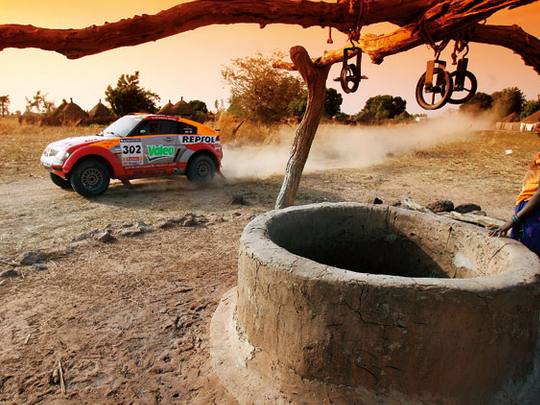
If French motorcycle racer Thierry Sabine had not lost his way in the Libyan Desert during the Abidjan-Nice rally 33 years ago, the world of rallying would have been a lot less exciting. Having wandered away from the course, young Sabine was awe-struck by the stunning beauty and grandeur of the previously unexplored dunes.
Rather than being disappointed in not completing the rally, he returned home with a burning desire to share his experience with as many upcoming racers as possible. He visualised a rally that would begin in Paris, go through Algiers before crossing the daunting dunes of the Sahara in Agadez and culminating in Dakar, the capital city of Senegal. So strong was his determination that he turned his imagination into reality within a few months and on December 26, 1978, the Paris-Dakar rally was born, opening a whole new world to racing enthusiasts from across the globe.
Although Sabine was a dreamer, even he wouldn't have imagined the enormous success the event would become. A total of 170 competitors turned up for the inaugural race, all drawn by the prospect of taking on the immensity of nature across 10,000km of inhospitable terrain.
Dakar was not just about racing, speed or competition. It was more of a spiritual experience for the participants. It called for discipline, endurance, an unfettered spirit of adventure and a resolute desire to unravel nature's mysteries. This entirely different approach to racing made the Dakar rally an instant success, with major manufacturers like BMW, Yamaha and Volkswagen fielding their teams right from the 1980 race, which also saw the inclusion of heavy trucks apart from the bike and car classes. So popular was it among enthusiasts that in 1981, Frenchman Thierry de Montcorge turned up in a modified Rolls-Royce.
When Sabine died in a helicopter crash during the 1986 rally, his father Gilbert took over the reins and ensured his son's dream lived on. The rally also created heroes from previously unknown individuals. Racers like Hubert Auriol, who was the first to win both the bike and car classes and Stéphane Peterhansel, who did the same and went on to break many a rallying record, owe their fame and career to the Dakar rally. It made legends out of automobiles too. The Mitsubishi Pajero, which is by far the most successful off-roader in Dakar's history with seven consecutive wins, is a case in point. Land Rover, Mercedes-Benz, Peugeot, Citroën, Porsche and Renault are some of the other carmakers who have tasted success over the years. Many manufacturers use the extreme conditions offered by the rally to test and demonstrate the durability of their vehicles. Volkswagen is starting commercial production of its Race Touareg, which was driven to success by Qatari Nasser Al Attiyah.
Although warnings of a terrorist attack in Mauritania before the start of the 2008 rally threatened to jeopardise the event's future, it proved a blessing in disguise. This development prompted the organisers to consider other continents. Thus the Dakar Series was born, with the first event, the Central Europe rally from Hungary to Romania being held the same year. From 2009, the gruelling annual rally has been held in two South American countries — Chile and Argentina — further widening the horizons for its daring participants.











